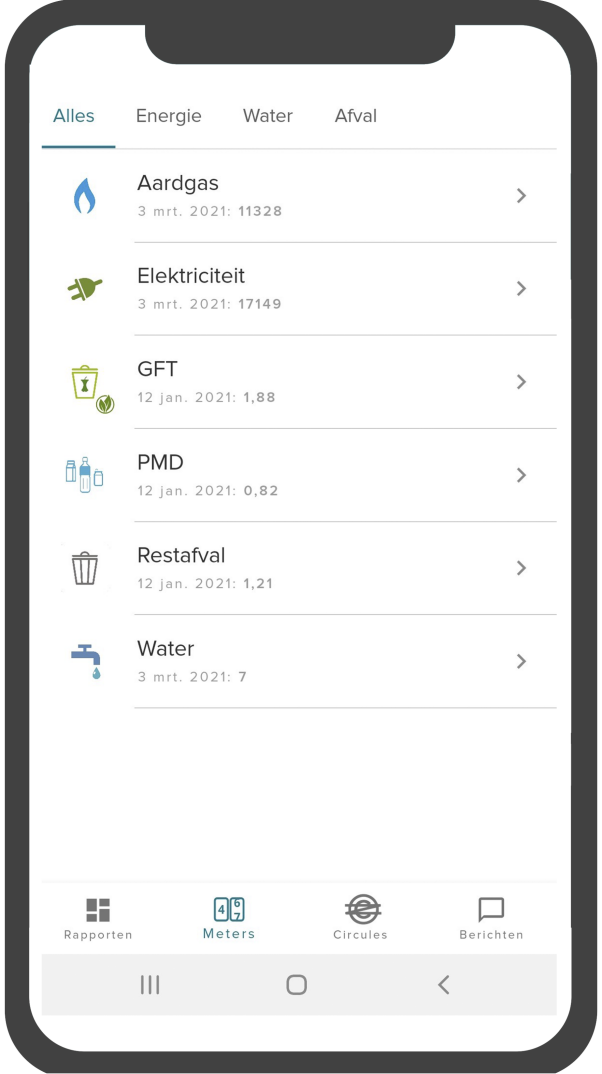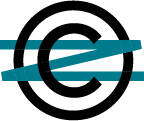

SCROLL

The hardware is not sufficient for us to become a climate-neutral city. To become a true circular community, we need the people. They are the software.
Sam, City of Antwerp Project Leader for Heat and Energy

What?
• Smart meters registered the use of heat and electricity and the amount
of waste accumulated
• Residents could monitor their use via the Circular South app.
• Ecopower set up a neighbourhood energy group that invested
in community solar panels.
• By demonstrating circular behaviour, residents could earn circules.
Responsible partners?
Ecopower, Digipolis Antwerpen, VITO/EnergyVille, imec, City of Antwerp and EnergieID
Lessons learnt
It is best to choose technologies that are easily adapted to new innovations. To collect data, all partners need to be involved; for example utility suppliers.
4.1. Smart meter and app
One of the greatest challenges for the partners of Circular South was to properly inform and stimulate residents, and to then keep them motivated. Technology helped us with this. Using smart sockets and sensors, we could measure the use of heat and electricity, as well as how much household waste was being produced by 61 residents in the neighbourhood. The results were made available in the Circular South app that the residents helped to develop. These gatherings were kept informal, based more on getting to know each other better over a drink. To help to cut back on usage, the participants received tips in the app. When they demonstrated circular behaviour, they were rewarded with virtual points: circules.
Energy
Via the app, the residents with a smart meter received information about the use of their electricity, the temperature and the degree of humidity in their homes. We made a simulation of the energy production of the community solar panels.
Garbage
Via the A-card, the app tracked what was deposited into the waste sorting streets, sorted out in type of waste and frequency with which it was deposited.
Collecting virtual points
Anyone who saved energy, reduced their waste or lived more sustainably, was rewarded with circules. Residents could trade these virtual points for A-card points with related benefits.
Tips for reducing
Via the app, the residents received tips, reminders and encouragement to reduce energy and water use, reduce the amount of waste they needed to dispose of, and reuse materials.
Smarter living together
Via the ‘community’ button, the residents could compare their own use of resources with that of other residents. This was an extra stimulus to do a little better than the others!


Evaluation
Watch the VIDEO 'DISCOVER THE SUSTAINABLE NEIGHBOURHOOD NEW SOUTH'.
The results
TECHNOLOGY
Technology changes at light speed. In the ideal situation, you find suppliers who are in touch with the latest innovations, who are flexible and large enough in range and number, and who guarantee that they will be able to support you in the long run. With Circular South, we had bad luck, with the supplier of our smart meters announcing during the project that they were cancelling their platform.
Make a timely start to keeping inventories and collecting data. Information about subjects like use appears to be an important trigger for convincing people to step into and remain involved with the project. This data collection proved to be more difficult than expected. We did not succeed in linking water usage data to the Circular South app.
Developing an app? Involve everyone from the start. A good app is handy to use, works flawlessly and triggers people to come back again soon. For this, you need input from everyone involved. Ask residents what information they want to find in the app. And work with suppliers, data managers and the app development team to know what is technically possible. One of the greatest challenges involving data comes from the way it is collected and stored. You need knowledge and technology to be able to make this data usable. Even the test phase demands a lot of time—until everything works the way it should.
Hold regular discussions with utility companies about sharing personal data. The privacy laws permit the sharing of data, but only with the permission of the residents. We still found there was a lot of unwillingness among the utility companies. And without data, an app is useless and you have no incentives to get residents to take part in the circular story.
Our initial ambition was to sign up 200 residents for the smart meter and the Circular South app. This appeared to be too ambitious, as the construction of the neighbourhood was delayed, which meant that not many people were living there yet. In addition, the Covid-19 pandemic forced us to stop the installation in the apartments of interested residents.

Energy
Via the app, the residents with a smart meter received information about the use of their electricity, the temperature and the degree of humidity in their homes. We made a simulation of the energy production of the community solar panels.
Garbage
Via the A-card, the app tracked what was deposited into the waste sorting streets, sorted out in type of waste and frequency with which it was deposited.
Collecting virtual points
Anyone who saved energy, reduced their waste or lived more sustainably, was rewarded with circules. Residents could trade these virtual points for A-card points with related benefits.
Tips for reducing
Via the app, the residents received tips, reminders and encouragement to reduce energy and water use, reduce the amount of waste they needed to dispose of, and reuse materials.
Smarter living together
Via the ‘community’ button, the residents could compare their own use of resources with that of other residents. This was an extra stimulus to do a little better than the others!
The results
What?
• Smart meters registered the use of heat and electricity and the amount
of waste accumulated
• Residents could monitor their use via the Circular South app.
• Ecopower set up a neighbourhood energy group that invested
in community solar panels.
• By demonstrating circular behaviour, residents could earn circules.
Responsible partners?
Ecopower, Digipolis Antwerpen, VITO/EnergyVille, imec, City of Antwerp and EnergieID
Lessons learnt
It is best to choose technologies that are easily adapted to new innovations. To collect data, all partners need to be involved; for example utility suppliers.
4.1. Smart meter and app
One of the greatest challenges for the partners of Circular South was to properly inform and stimulate residents, and to then keep them motivated. Technology helped us with this. Using smart sockets and sensors, we could measure the use of heat and electricity, as well as how much household waste was being produced by 61 residents in the neighbourhood. The results were made available in the Circular South app that the residents helped to develop. These gatherings were kept informal, based more on getting to know each other better over a drink. To help to cut back on usage, the participants received tips in the app. When they demonstrated circular behaviour, they were rewarded with virtual points: circules.

Technology changes at light speed. In the ideal situation, you find suppliers who are in touch with the latest innovations, who are flexible and large enough in range and number, and who guarantee that they will be able to support you in the long run. With Circular South, we had bad luck, with the supplier of our smart meters announcing during the project that they were cancelling their platform.
Make a timely start to keeping inventories and collecting data. Information about subjects like use appears to be an important trigger for convincing people to step into and remain involved with the project. This data collection proved to be more difficult than expected. We did not succeed in linking water usage data to the Circular South app.
Developing an app? Involve everyone from the start. A good app is handy to use, works flawlessly and triggers people to come back again soon. For this, you need input from everyone involved. Ask residents what information they want to find in the app. And work with suppliers, data managers and the app development team to know what is technically possible. One of the greatest challenges involving data comes from the way it is collected and stored. You need knowledge and technology to be able to make this data usable. Even the test phase demands a lot of time—until everything works the way it should.
Hold regular discussions with utility companies about sharing personal data. The privacy laws permit the sharing of data, but only with the permission of the residents. We still found there was a lot of unwillingness among the utility companies. And without data, an app is useless and you have no incentives to get residents to take part in the circular story.
Our initial ambition was to sign up 200 residents for the smart meter and the Circular South app. This appeared to be too ambitious, as the construction of the neighbourhood was delayed, which meant that not many people were living there yet. In addition, the Covid-19 pandemic forced us to stop the installation in the apartments of interested residents.

Evaluation

The hardware is not sufficient for us to become a climate-neutral city. To become a true circular community, we need the people. They are the software.
Sam, City of Antwerp Project Leader
for Heat and Energy
Watch the VIDEO 'DISCOVER THE SUSTAINABLE NEIGHBOURHOOD NEW SOUTH'.
